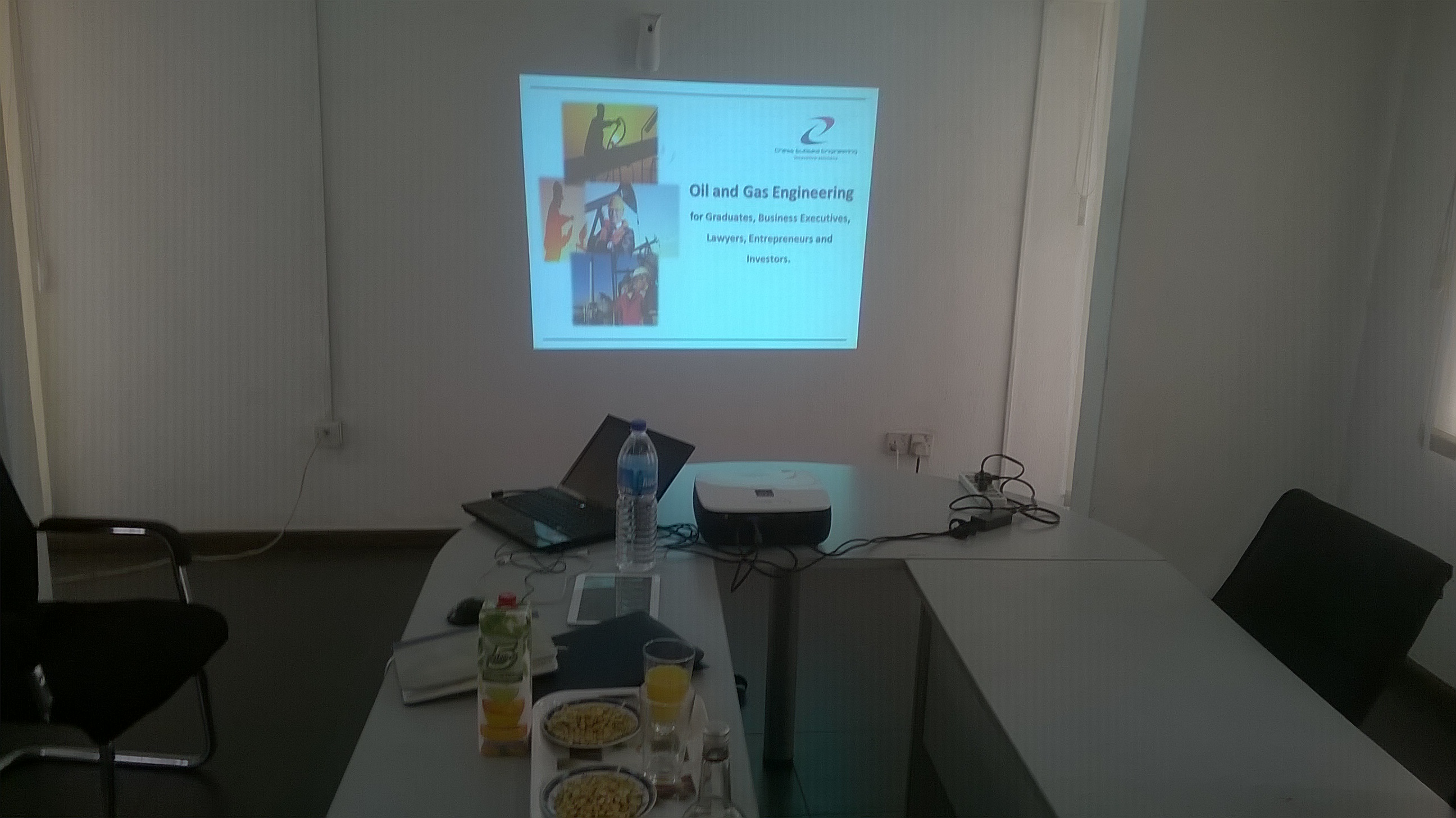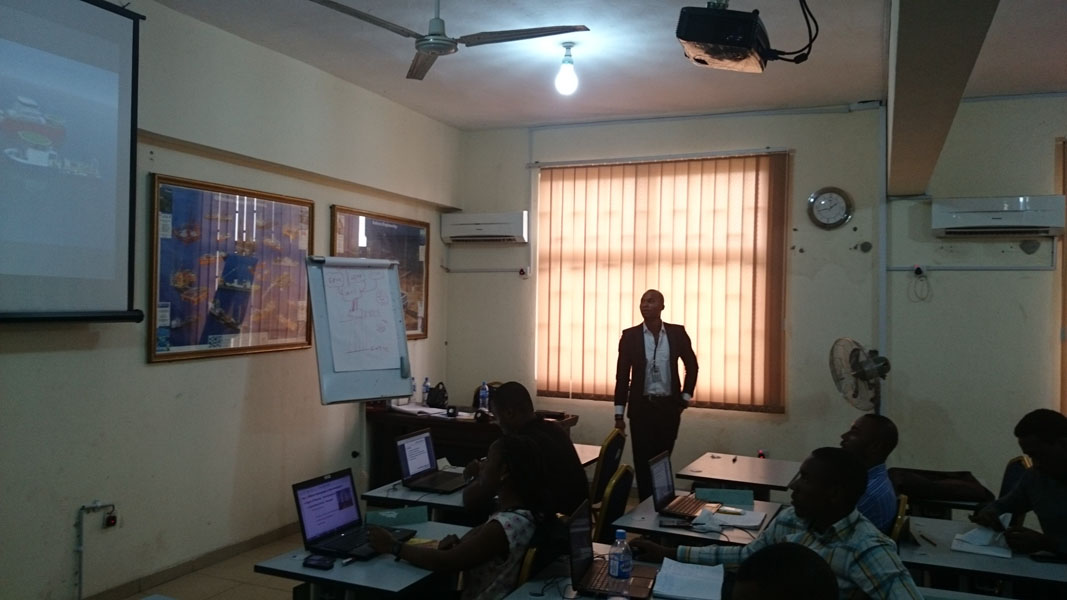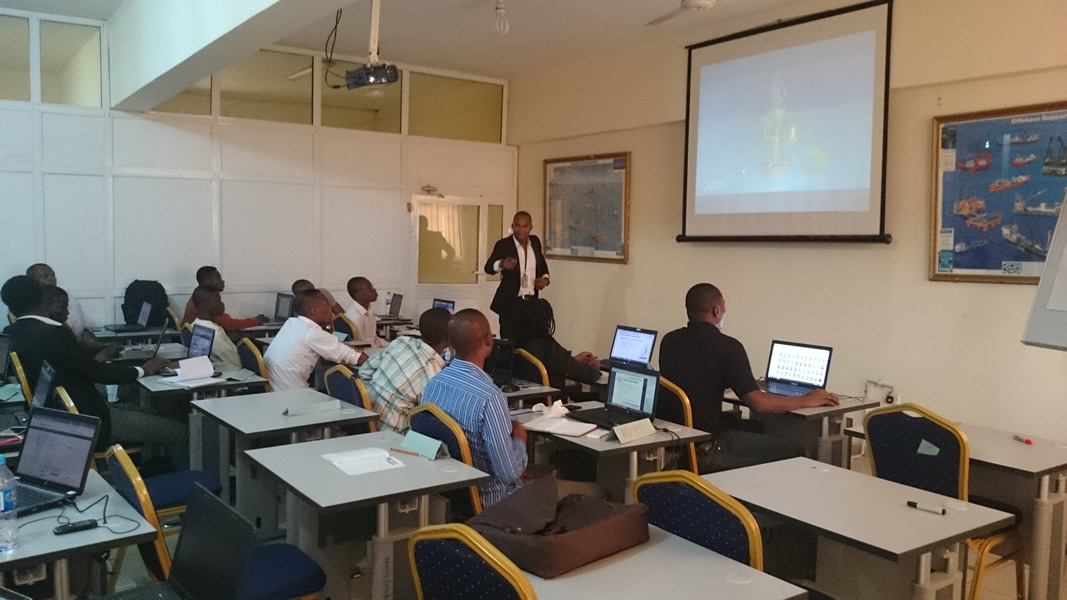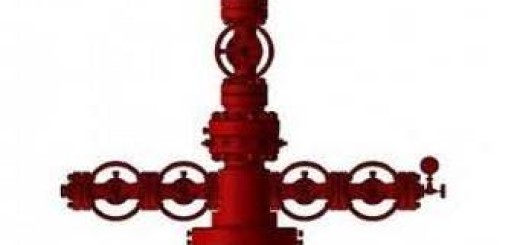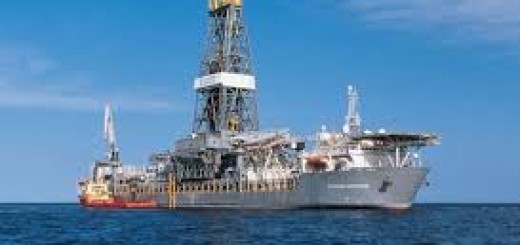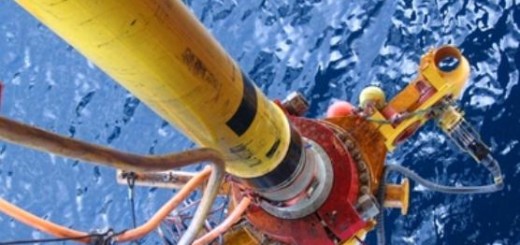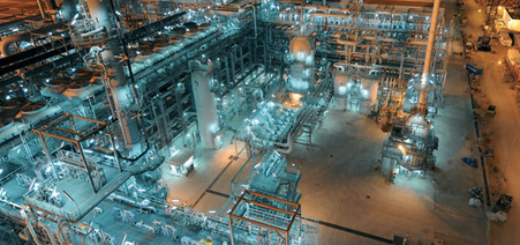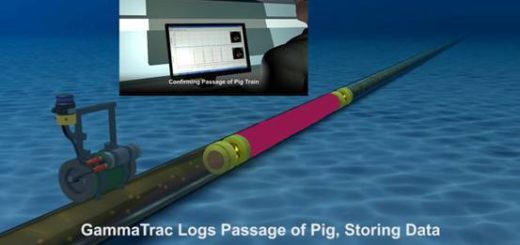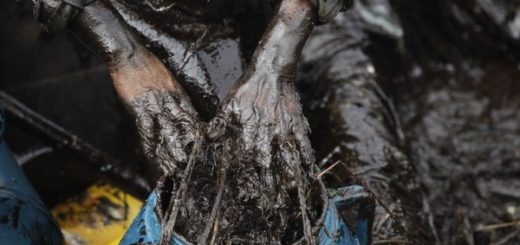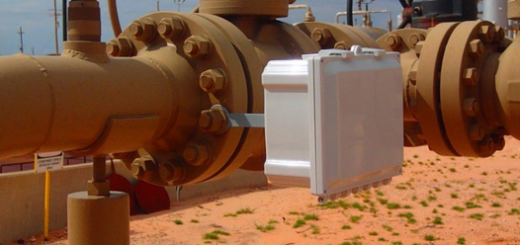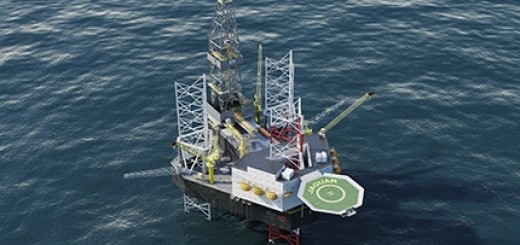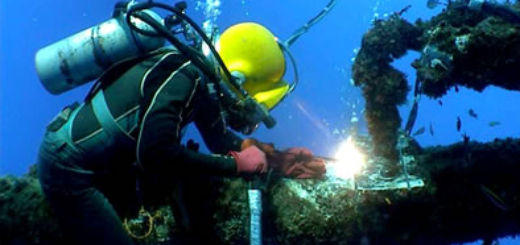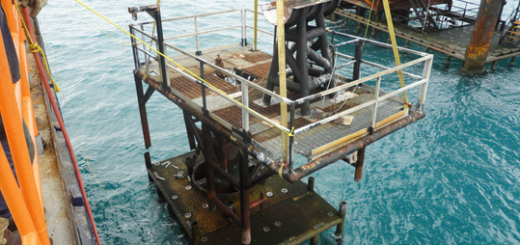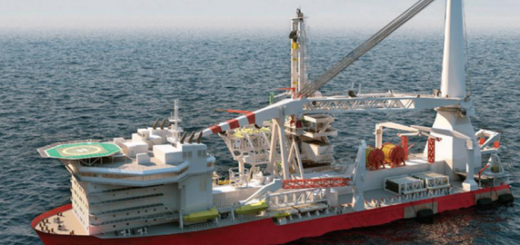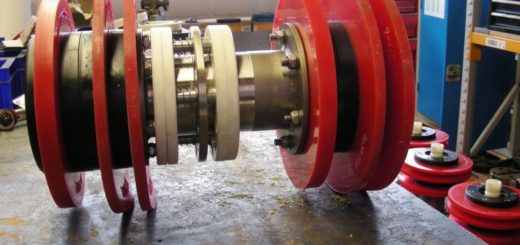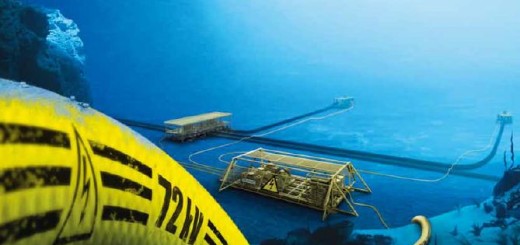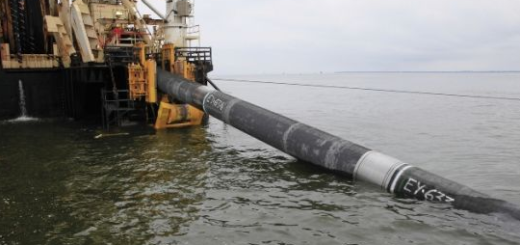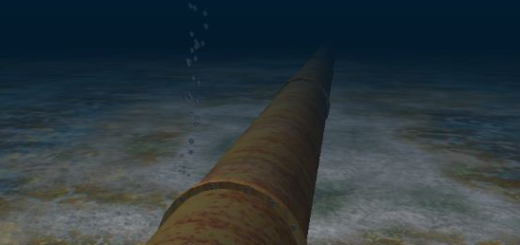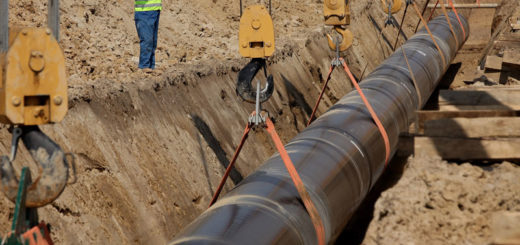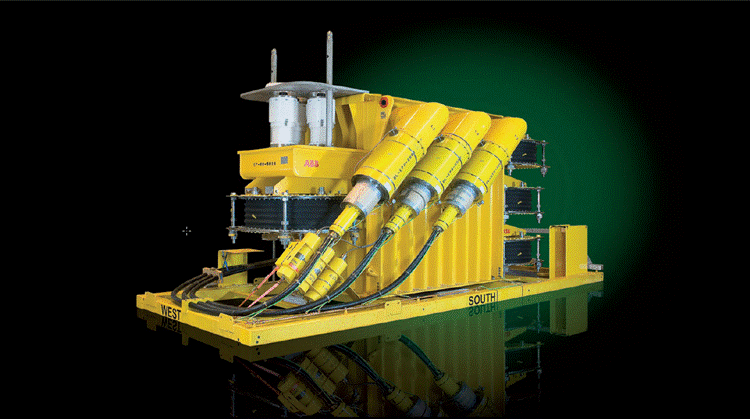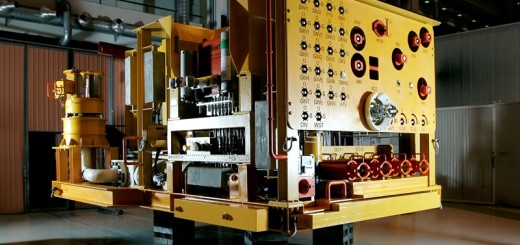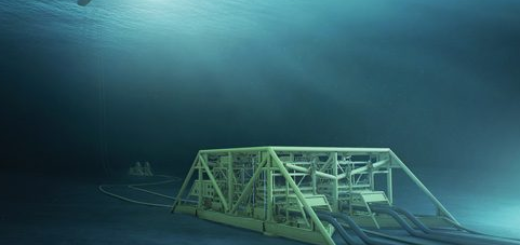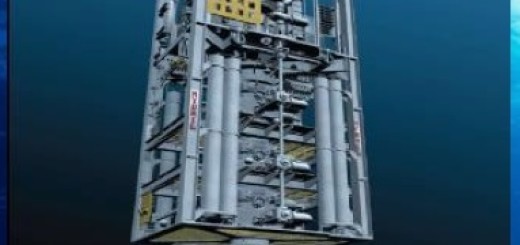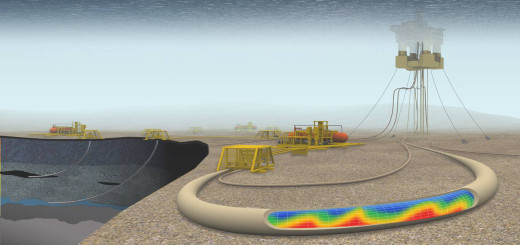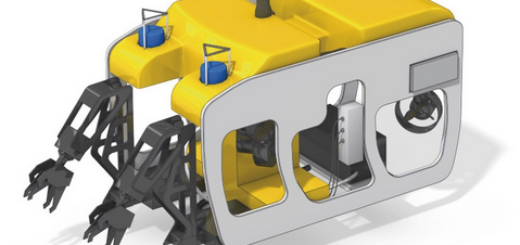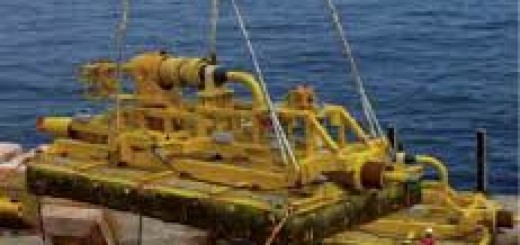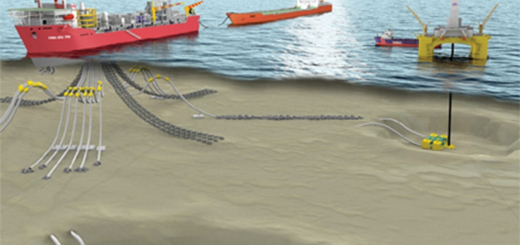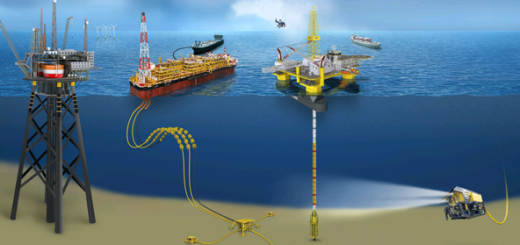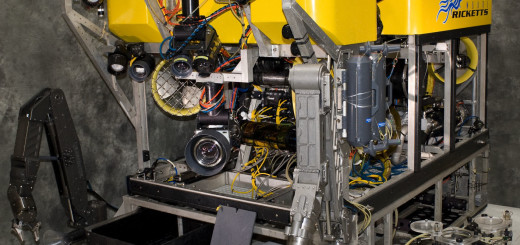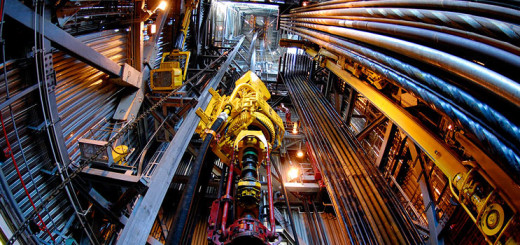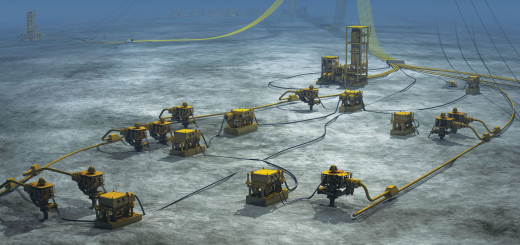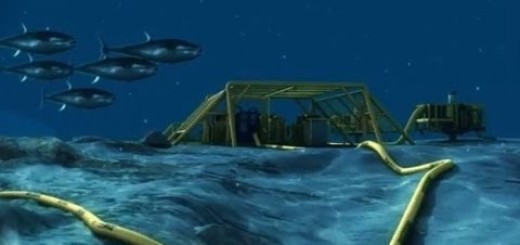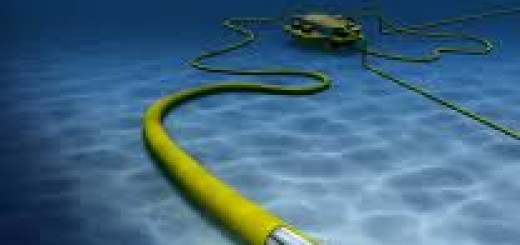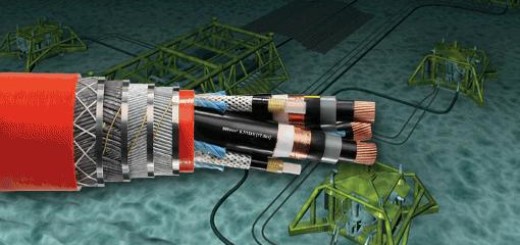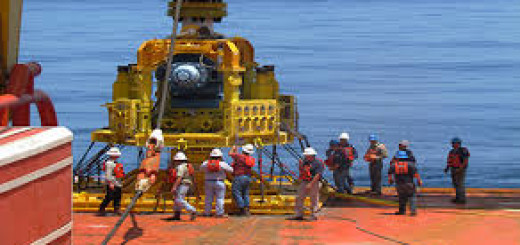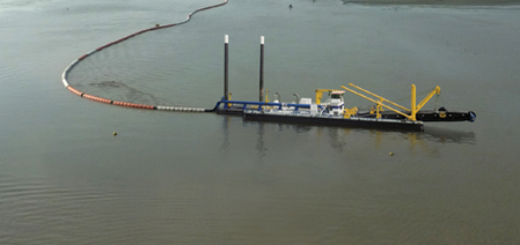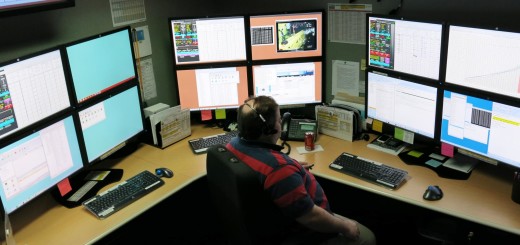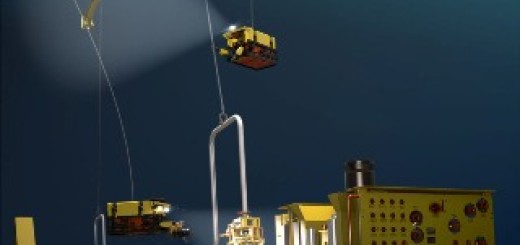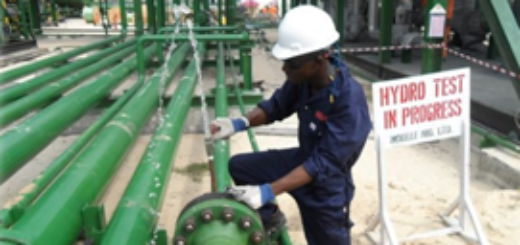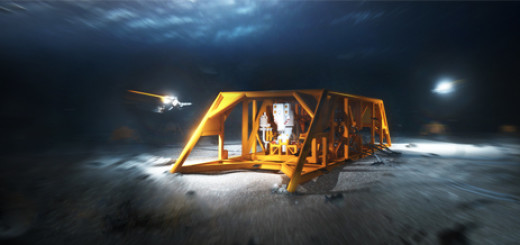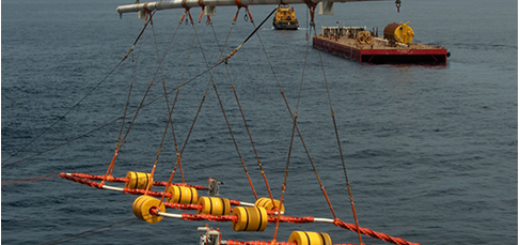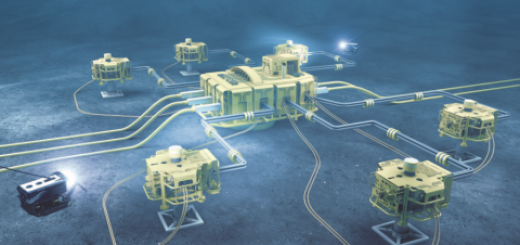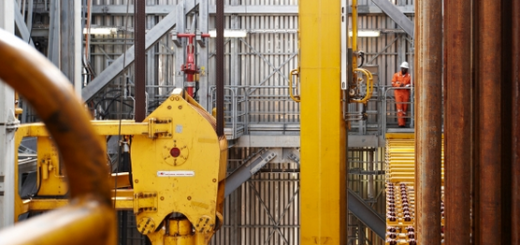Testing, Inspection and Maintenance of BOP II
Testing, Inspection and Maintenance of BOP
2.2 Pressure Tests:
- When performing the low pressure test, do not apply a higher pressure and bleed down to the low test pressure. The higher pressure could initiate a seal that may seal after pressure is reduced therefore misrepresenting a low pressure condition.
- A stable low pressure test should be maintained for at least 5 minutes.
The initial high pressure test on components that could be exposed to well pressure (BOP stack, choke manifolds and choke and kill lines) should be to the rated working pressure of the RAM BOP’s or to the rated working pressure of the wellhead that the stack is installed on, whichever is lower. Initial pressure tests are defined as those tests that should be performed on location before the well is spudded or before the equipment is put into operational device service.
- Diverter systems are typically tested to a low pressure only ref to API RP 64.
- Annular BOP’s with a joint of drill pipe installed may be tested to the test pressure applied to the RAM BOP’s or to a minimum of 70% of the annular preventer working pressure, whichever is less. Subsequent pressure tests are tests that should be performed at identified periods during drilling and completion activity on a well.
- The lower Kelly valves, Kelly, Kelly cock, drill pipe safety valves, inside BOP, and top drive safety valves, should be tested with water pressure applied from below to a low pressure of 200 psi – 300 psi then to the rated working pressure.
- There may be instances when the available BOP stack and or / the wellhead have higher pressures than are required for the specific wellbore conditions due to equipment availability. Special conditions such as these should be covered in the site-specific well control pressure test program.
Subsequently, high pressure tests on the well control components should be to a pressure greater than the maximum anticipated surface pressure, but not to exceed the working pressure of the RAM BOP’s.
- A stable high pressure test should be maintained for at least 5 minutes. With larger size annular BOP’s some small movement typically continues within the large rubber mass for prolonged periods after pressure is applied. This packer creep movement should be considered when monitoring the pressure test of the annular.
2.3 Function Tests:
Function test of a piece of equipment or a system to verify its intended operation. Function testing typically does not include pressure testing. Actuation test, operating test and readiness are other terms commonly used synonymously for function test.
All operational components of the BOP equipment systems should be functioned at least once a week to verify the component’s intended operations.
- Function tests should be alternated from the Driller’s panel and from mini – remote panels, if on location (Ref. Appendix A worksheet).
- Actuating time should be recorded as a data base for evaluating trends. (Refer to worksheets appendix A.)
2.4 Pressure Tests:
Pressure Gauges and chart recorders should be used and all testing results recorded pressure measurements should be made at not less than 25% or more than 75% of the pressure span of the gauge.
Surface BOP Stack Equipment:
Unless restricted by height, the entire stack should be pressure tested as a unit. Annular BOP’s should be tested with the smaller OD pipe to be used.
Fixed bore pipe rams should be tested only on the pipe OD size that matches the installed ram blocked,.
Variable bore rams should be initially pressure tested on the largest and smallest OD pipe that may be used during the well operations. Prior to testing each RAM BOP, the secondary rod seals (emergency pack off assemblies) should be checked to ensure the seals have not been energised. Should the ram shaft seal leak during the test, the seal shall be repaired rather than energising the secondary packing.
RAM BOP’s equipped with ram locks should be pressure tested with ram locks in the closed position and closing pressure bled to zero. Manual locks either screw clockwise or counter-clockwise, to hold the rams closed. Hand wheels should be in place and the thread on the ram locking shaft should be in a condition that allows the locks to be easily operated.
2.5 Hydraulic Operator Test
The application of a pressure test to any hydraulic operated component of hydraulic actuated equipment. Hydraulic operator tests are typically specified by the manufacturer for such items as: BOP operator cylinder and bonnet assemblies, hydraulic valve actuators, hydraulic connectors etc. Operating chamber test is frequently used synonymously for hydraulic operator test.
https://www.youtube.com/watch?v=ctb_rLuswmk
The pressure test performed on hydraulic chambers of annular BOPs should be to at least 1500 psi. Initial pressure tests on hydraulic chambers of ram BOP’s and hydraulically operated valves should be to the maximum operating pressure recommended by the manufacturer.
The test should be run for both the opening and closing chambers.
Pressure should be stabilized for at least 5 minutes.
Subsequent pressure tests are typically performed on hydraulic chambers only between wells or when the equipment is reassembled.
The initial pressure test on the closing unit valves, manifolds, gauges and BOP hydraulic control lines should be to the rated working pressure of the control unit. Subsequent pressure tests of closing unit systems are typically performed following the disconnection or repair of any operating pressure containment seal in the closing unit system, but limited to the affected components.
2.5 Crew Drills
The proficiency with which drilling crews operate the well control equipment is as significant important as the operational condition of the equipment. Crew drills and well control rig practices are address in API RP 59.
Surface BOP Control Systems
Pump Capability Requirements
Each closing unit should be equipped with sufficient number and sizes of pumps to satisfactory perform the operation described in this paragraph. With the accumulator system removed from service, the pumps should be capable of closing the annular preventer on the size of drill pipe being used, plus opening the hydraulically operated choke line valve and obtain a minimum 200 psi pressure above accumulator pre-charge pressure on the closing unit manifold within two (2) minutes or less.
<< Click here to go to the previous page
<< Click here to go back to Surface & Subsea Well Control for Drilling Engineers | Supervisors
Advanced Subsea Production System (SPS) Professional Courses
Subsea production system is associated with the overall process and all the equipment involved in drilling, field development, and field operation.
Component of Subsea production system includes: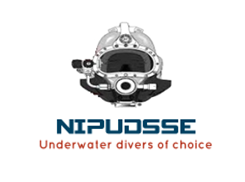
- Subsea Well Drilling Systems
- Wellhead system(s) with associated casing strings
- Subsea Christmas trees (XT) for production or injection purposes
- Subsea Umbilical Risers and Flowlines (SURF)
- Manifolds, Jumpers, Spools, Pipelines and Foundations
- Subsea Control Systems (SCS)
- Subsea Processing Systems – Boosting, Compressors, Separation & Power
The downloadable PDF below; shows relationship between subsea production systems (SPS) – Field Architecture
[pdf-light-viewer id="6598"]
Chess Subsea professional training modules is geared towards detailed understanding of subsea production system, wellheads and well control. It also focus on Reliability, Availability, Maintainability and Safety (RAMS) of these system and its integrity management.
Send your email to info@chesssubseaengineering.com
Chess Subsea Engineering Short Professional Courses – Paid
- Fundamentals of Oil and Gas Engineering for Graduates and Business Development Resource Personnel’s
- Fundamentals of Oil and Gas Offshore Engineering
- Fundamentals of Offshore & Subsea Operations Project Design and Planning

- Fundamentals of Subsea Survey, Positioning & Metrology
- Fundamentals of Subsea Engineering
- Fundamentals of Subsea Processing Systems – Boosting, Compressors, Separation & Power
- Fundamentals of Pipeline Engineering for Engineers
- Fundamentals of Subsea Flow Assurance for Engineers
- Fundamentals of Subsea Vessels & Lay Equipment
- Fundamentals of Subsea Pipelines and Structures Installation Techniques
- Fundamentals of Subsea Hoop Up and Field Commissioning – Pipeline Case Study
- Fundamentals of Isolation & Intervention Guild lines for Driver Access to Subsea Systems
- Fundamentals of Underwater Access Technology – Divers and Diverless
- Introduction to Intervention & Workover Systems used in the Subsea Production System Environment
- International Standards, Directives & Guidelines for the Subsea Oil & Gas Industry
- Subsea Topside Equipment Practices, Processes for Specifying & Sizing

- Application of Mathematical tools used for calculation & Sizing of Topside and Subsea Equipment
- Fundamentals of Valves utilized in Subsea Production Systems
- Fundamentals of Subsea Umbilicals & Control Lines
- Subsea Environment and Basic Corrosion Mechanism
- Fundamentals of Offshore Decommissioning & Abandonment
- Multiplex Subsea Control BOP Stack – Operations, maintenance, trouble shooting and job hazard analysis
- Subsea Field Development
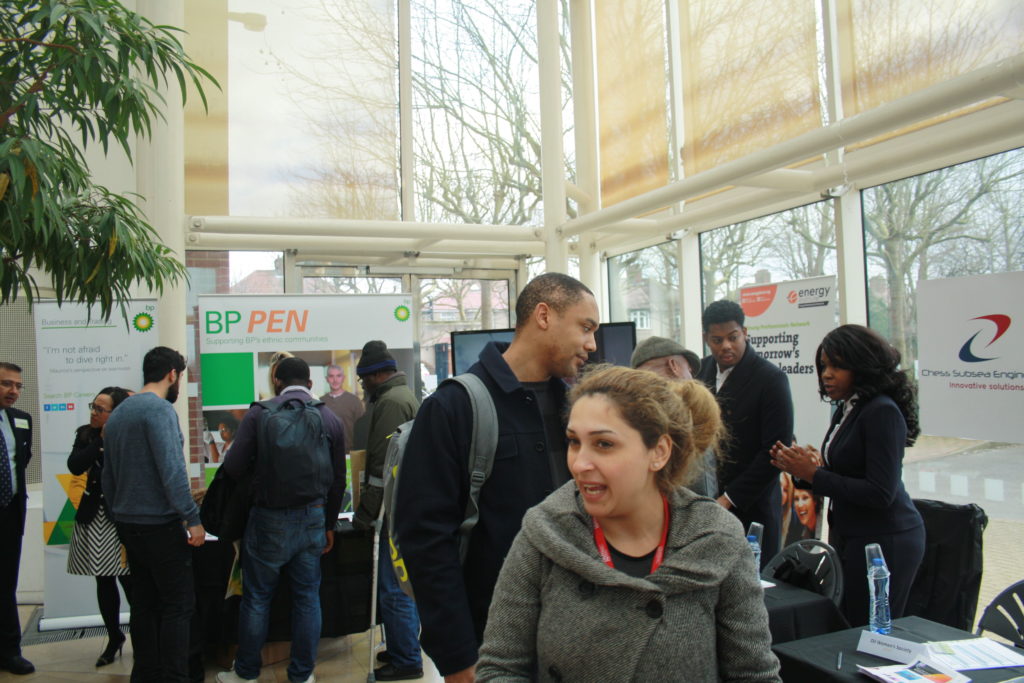
- Subsea Well Control Systems
- Subsea Distribution System
- Subsea Surveying, Positioning, Installation and Foundation
- Installation and Vessels
- Subsea Cost Estimation
- Subsea Control Systems
- Supervisory Control And Data Acquisition (SCADA) System (Advanced)
- Subsea Power Supply
- Subsea Route Selection & Free Spanning
- Stress Analysis Based Design of Pipelines
- Fundamentals of Pipeline Buckling and Collapse
- Fundamentals of Subsea Systems Environmental Assisted Cracking & Fatigue Life Prediction

- Fundamentals of Subsea Pipeline Stability
- Subsea Systems Materials and Steel Grade Selection
- Fundamentals of Subsea Systems Cathodic Protection Monitoring
- Pipeline Ancillary Equipments
- Pipeline Installation, Commissioning and Decommissioning
- Pipeline Failure, Corrosion and Insulation
- Subsea Project Execution and Interfaces
- Subsea Risk and Reliability
- Subsea Systems Risk Based Inspection
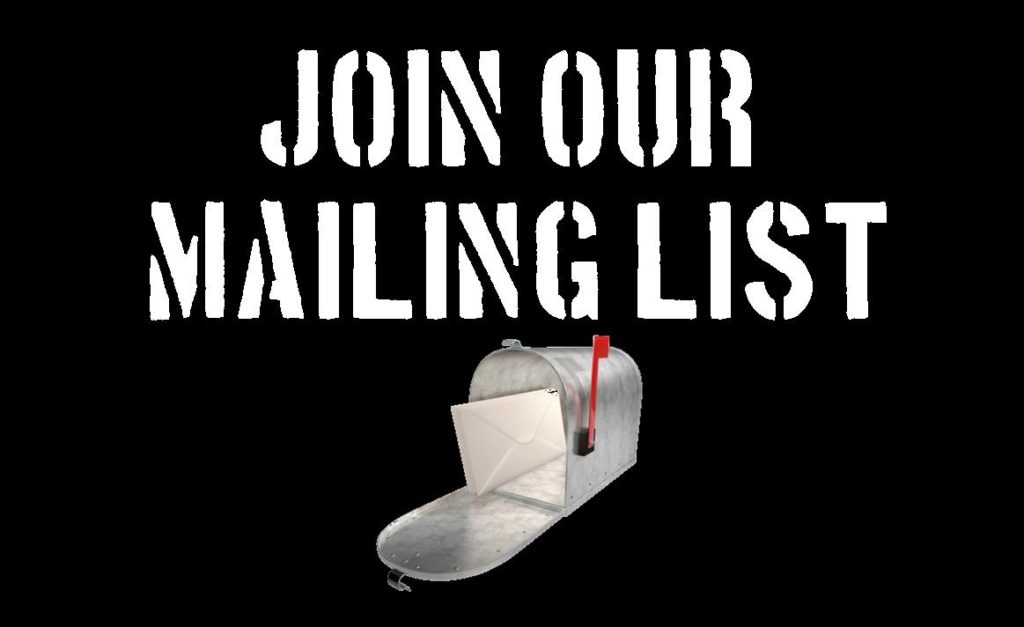
- Hydraulics
- Subsea Corrosion and Scale
- Subsea Manifolds – Engineering, Construction & Installation
- Pipeline Ends and In-Line Structures – Engineering, Construction & Installation
- Subsea Connections and Jumpers – Engineering, Construction & Installation
- Subsea Wellheads and Trees – Engineering, Construction & Installation
- ROV Intervention and Interface

- Subsea Umbilical Systems – Engineering, Construction & Installation
- Drilling Risers – Engineering, Construction & Installation
- Subsea Production Risers – Engineering, Construction & Installation
- Advanced Pipeline Engineering – Construction, Installation and Operations
Chess Subsea Engineering Operations Management Courses – Paid
- Oil & Gas HSE Management

- Fundamentals of Pipeline Pre-Commissioning Operations Management
- Fundamentals of Pipeline Cathodic Protection Operations Management
- Introduction to Pipeline Construction Operations Management
- Introduction to Pipeline Leak Repair Operations Management
- Introduction to Pipeline Pigging Operations Management
- Oil & Gas Operations Quality Management for Project Teams
Chess Subsea Engineering Oil and Gas Contracting Courses – Paid
Chess Subsea Engineering Oil Spill Response & Cleanup Courses – Paid
Chess Subsea Engineering Dredge Operations Management Courses – Paid
Testimonials
“I have passed online course – Fundamentals of Subsea Engineering – provided by Chess Subsea Engineering  Company. Found it very useful and informative. Communication with personnel was prompt and effective. This Course – was exactly what I needed at the moment. I’m happy to use gained knowledge on practice once I’m back offshore. Looking forward to get more professional knowledge from Chess Subsea Engineering” – Dmitrij Panfilov (Lithuania)
Company. Found it very useful and informative. Communication with personnel was prompt and effective. This Course – was exactly what I needed at the moment. I’m happy to use gained knowledge on practice once I’m back offshore. Looking forward to get more professional knowledge from Chess Subsea Engineering” – Dmitrij Panfilov (Lithuania)
“I have worked closely with Engr. Oseghale Okohue on Oil & Gas Business Development ideas and initiatives and  found him to be industrious, innovative and highly entrepreneurial. I have personally gained a helicopter view of the Oil and Gas production system business (onshore & offshore) from our interactions and consider him a unique resource person. – Dr Micheal Ebenede, Business Development Manager, Abbeycourt Energy Services Limited (AESL), Nigeria
found him to be industrious, innovative and highly entrepreneurial. I have personally gained a helicopter view of the Oil and Gas production system business (onshore & offshore) from our interactions and consider him a unique resource person. – Dr Micheal Ebenede, Business Development Manager, Abbeycourt Energy Services Limited (AESL), Nigeria
“I have completed the online course – Fundamentals of Oil and Gas Engineering for Graduates and Business  Development Resource Personnel’s. The training was well packaged and the training materials were professionally prepared. I must commend Chess Subsea Engineering!” – Justina Huntersson, Logistic Assistance, Temile Offshore, Nigeria
Development Resource Personnel’s. The training was well packaged and the training materials were professionally prepared. I must commend Chess Subsea Engineering!” – Justina Huntersson, Logistic Assistance, Temile Offshore, Nigeria
 “Chess Subsea Engineering is an online organization that delivers as promise. A great business partner you can rely on. They are well vast and experience in subsea activities such as Processing, Production, Project Interface Management, Contracts, Training Seminars, Business Development and whatever you looking for in the oil and gas, just call on them. We at NIPUDSSE are pleased to partner with Chess Subsea Engineering and I believe, NIPUDSSE and CHESS SUBSEA ENGINEERING are fully positioned. I am pleased to indeed recommend them” – Bart H.A Okafor, founder / Sr. commercial underwater subsea diver, NIPUDSSE, Nigeria
“Chess Subsea Engineering is an online organization that delivers as promise. A great business partner you can rely on. They are well vast and experience in subsea activities such as Processing, Production, Project Interface Management, Contracts, Training Seminars, Business Development and whatever you looking for in the oil and gas, just call on them. We at NIPUDSSE are pleased to partner with Chess Subsea Engineering and I believe, NIPUDSSE and CHESS SUBSEA ENGINEERING are fully positioned. I am pleased to indeed recommend them” – Bart H.A Okafor, founder / Sr. commercial underwater subsea diver, NIPUDSSE, Nigeria
Send your email directly to Subsea Production Systems Training Division at sps@chesssubseaengineering.com for course payment
Subsea Field Development Engineering Support In House Courses
- Offshore Systems Decommissioning and Abandonment
- Offshore Project Engineering Procurement and Construction (EPC) Management
- Subsea Systems Asset Integrity Management
- Advanced Subsea Production Control System
- Advanced MUX BOP Control System
- FMECA of Subsea Control Module System and Sub components
- FMECA of Subsea XT System and Sub components
- FMECA of Subsea MUX BOP System and Sub equipment
- Subsea Production Systems Reliability Engineering (i.e. XT, MUX BOP, SCM, Jumpers, Spools, Risers, Manifolds, SDUs etc.)
- Hydraulic Power Unit Reservoir Sizing for Existing and New Field
- XT Components Selection
Chess Subsea Engineering Short Professional Training Gallery
Click here to Subscribe to our Free Monthly Online Training
Chess Subsea Engineering Free Professional Courses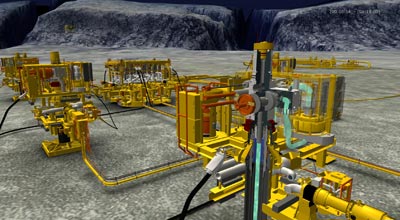
- A brief history of Health Safety Legislation – United Kingdom
- Oil and Gas Engineering for Undergraduates, Graduates & Business Development Team
- Introduction to Subsea | Offshore EPIC Project Interface
- Introduction to Subsea Production Systems
- Subsea Production System (SPS) Building Block
- Fundamental Building Block of Subsea Processing System
- Subsea Equipment Trends | Host Facilities | Installation Vessel | Tree Interface that Govern Design | XT Installation Techniques
- Subsea Intervention Operation Vessels
- Introduction to Subsea XT – Part 1
- Introduction to Subsea XT – Part 2
- Introduction to Subsea XT – Part 3

- Introduction to Subsea XT – Part 4
- Introduction to Subsea XT – Part 5
- Introduction to Subsea XT – Part 6
- Introduction to Subsea Xmas Tree (Advanced) – Part 7
- Introduction to Subsea Control System – Part 1
- Introduction to Subsea Control System – Part 2
- Introduction to Subsea Control System – Part 3
- Introduction of Subsea Control System – Part 4
- Introduction to Subsea Control System – Part 5
- Floating Production, Storage and Offloading (FPSO) Facilities
- General Specifications for Subsea Systems and Offshore Structures – Part 1
- Introduction to System Reliability Engineering
- Measurement of System Reliability Part 1

- Measurement of System Reliability Part 2
- Measurement of System Reliability – Part 3
- System Reliability and Risk Management Methodology
- System Design for Reliability
E-Course: Subsea Survey, Subsea System Installation and Subsea Control – Available Online 24 / 7
Explore Our Free Offshore Pipeline Training Modules
- Introduction to Offshore Pipeline

- Introduction to Pipeline Design
- Pipeline Performance Requirements
- Introduction to Offshore Pipelines Failures
- Offshore Pipeline Failure – External Corrosion
- Offshore Pipeline Cathodic Protection Design
Explore Our Free Management Development Training Modules
- Market Research – Part 1

- Business Development Plan – Part 2
- Cash Flow Management – Part 3
- Marketing – Part 1
- Component of Marketing – Part 2
- Creating a Brand – Part 3
Explore Our Free Oracle Primavera 6.0 PM Training Modules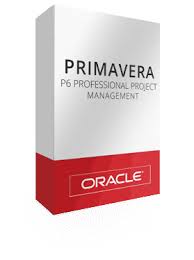
- Introduction to Project Management (PM) and Software’s
- Introduction to Oracle Primavera P6 Project Management (PM)
- Introduction to Primavera P6 Enterprise Project Manager (PM) Work Space
- Structuring of Project with Oracle Primavera P6 Project Management (PM)
- Advanced Techniques for Constructing Complex Project Activity Network





